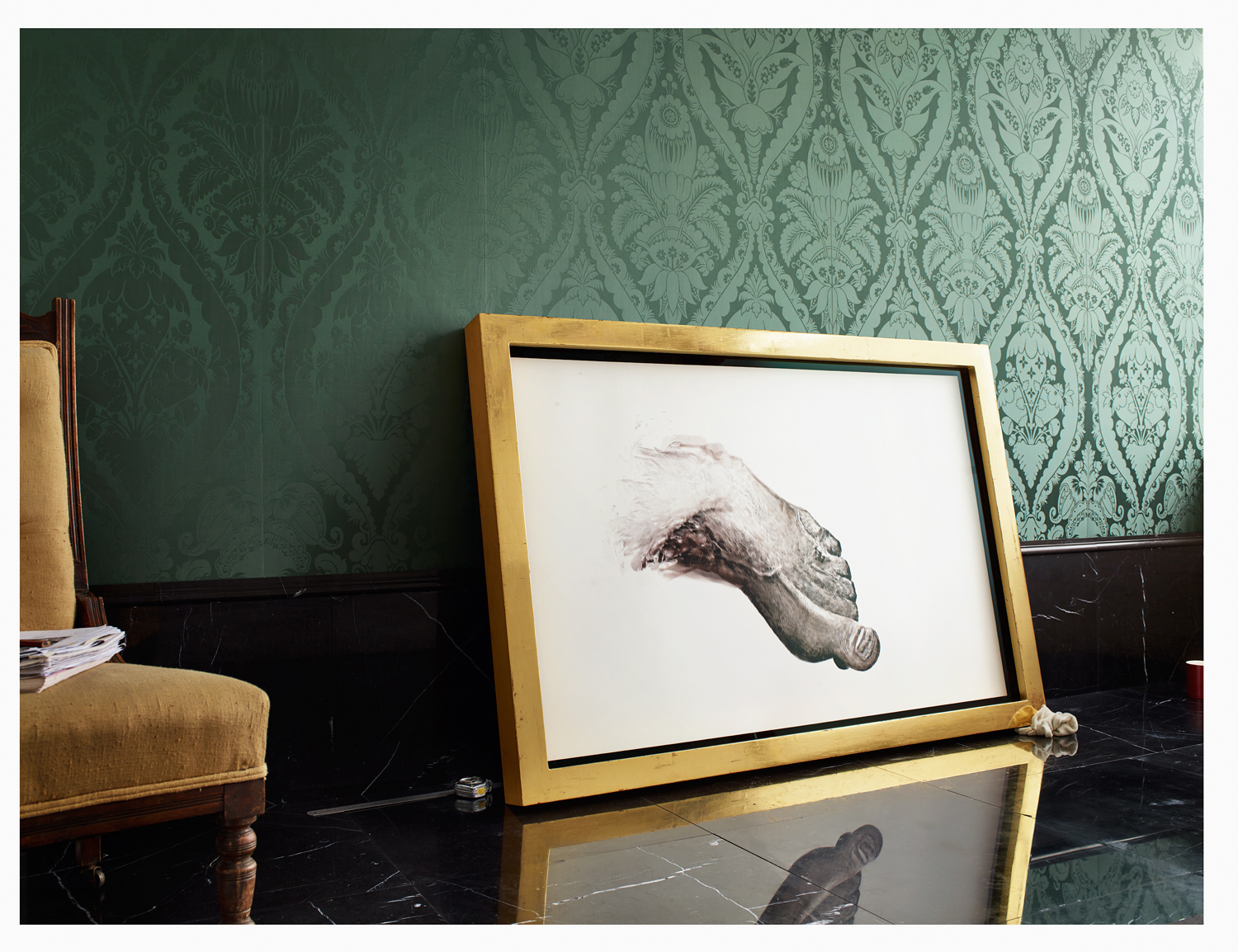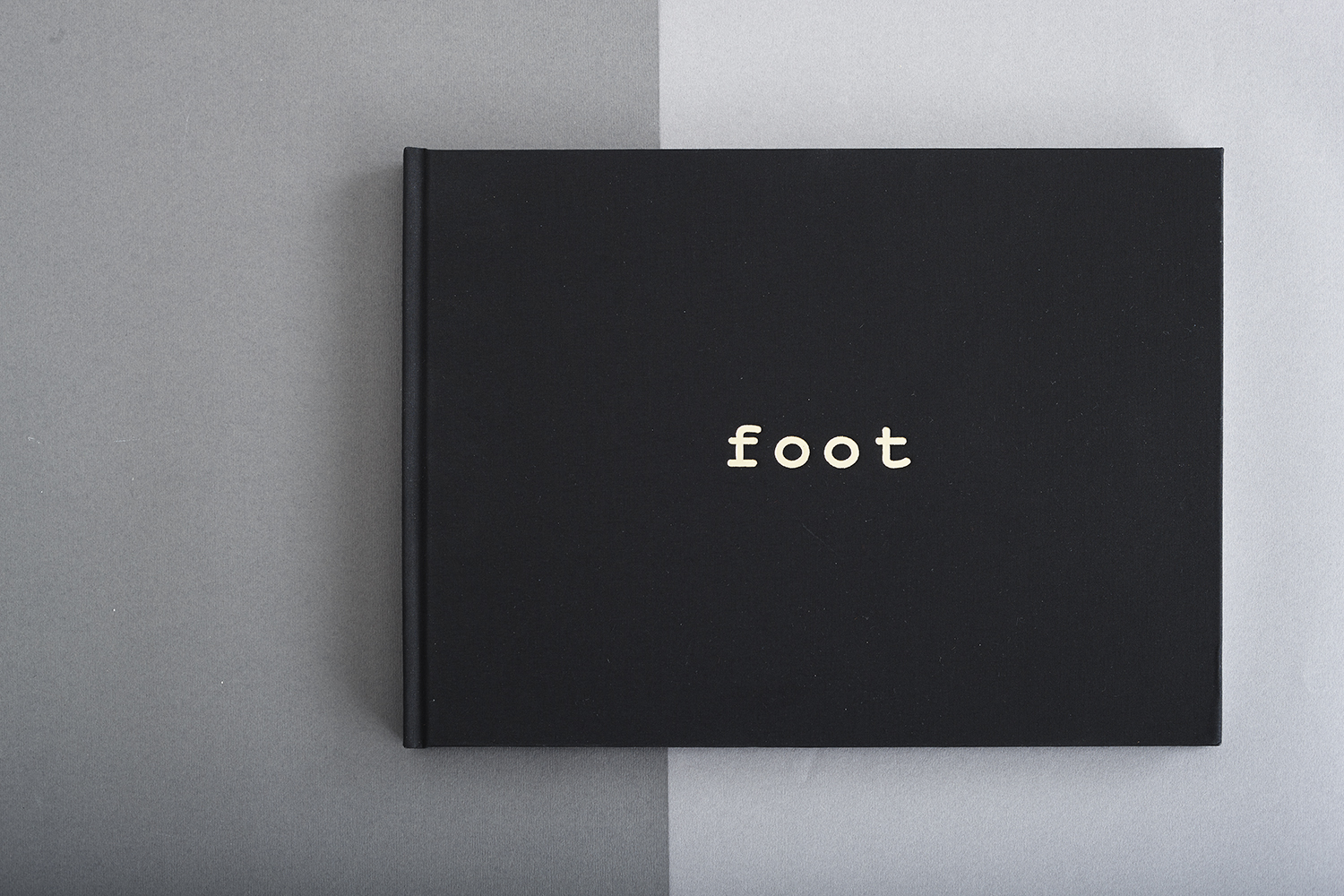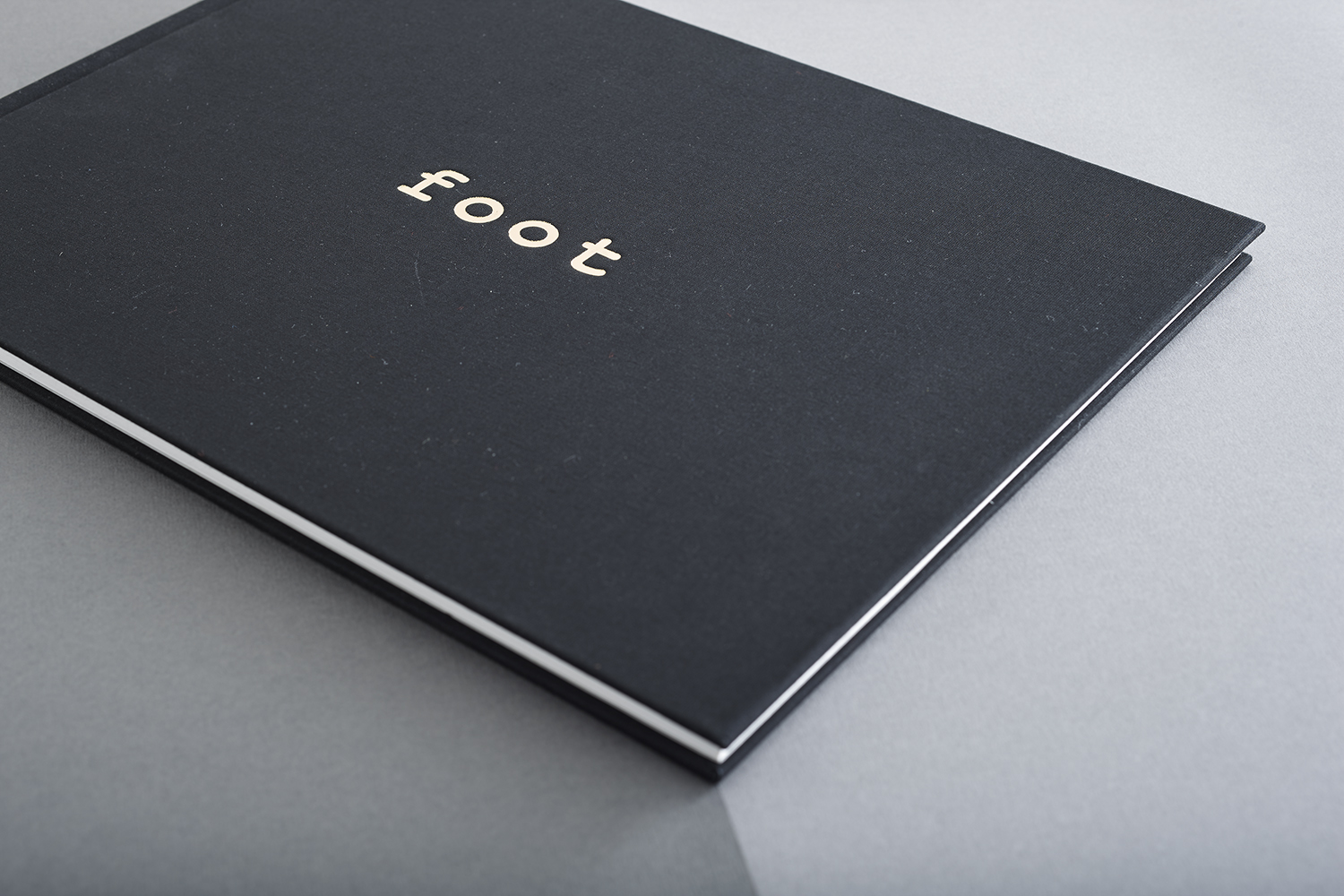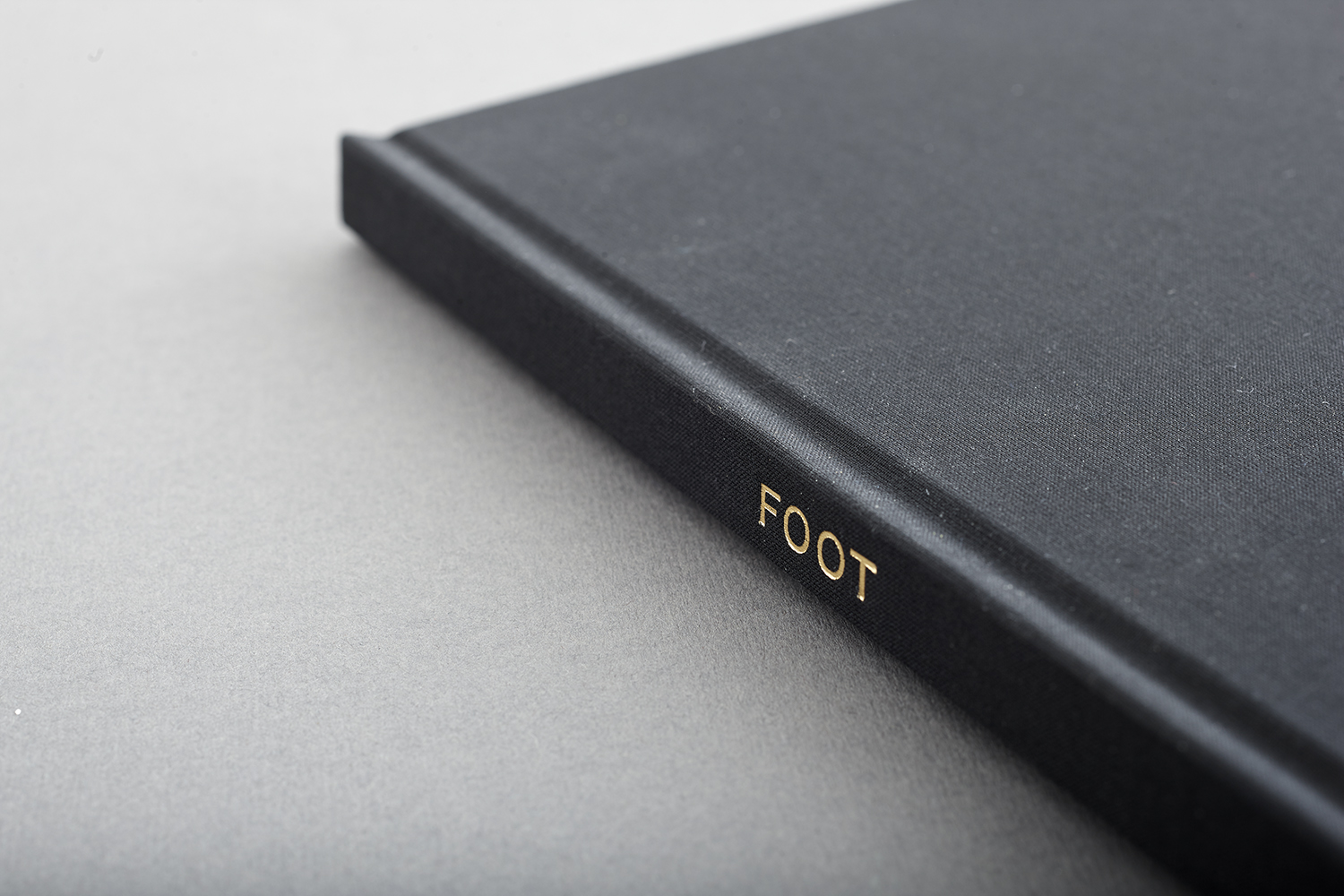FOOT
In interview, Collard said, “a long time ago, I had the notion that I might be able to tell the story of a person through depicting just one part of human anatomy, that I could get a sense of the whole person through their hand — if it gesticulated in a particular manner or it was doing a particular thing. In this way the detached anatomy gives the viewer the freedom to invent there own story about the human to which the pointing finger, snarling mouth, or stumbling foot might allude.”
Understood in this way, Foot has an intriguing duality. It invites the viewer to consider the story of the individual whose foot it is; an individual stumbling, out of control, perhaps drunk and about to fall. Moreover the foot is modelled on the artist’s own right foot, and so if Collard’s comments are taken at face value, the work might be interpreted as a kind of veiled self-portrait.
This work is also about the way in which the body serves as a bridge between inner and outer space. There is a sense that it comes out of a moment of heightened subjectivity, a kind of intense looking at a particular part of one’s own body, as both extension of the subject and viewable object. As Collard puts it, “you would think that if your attempt is to draw a piece of the human anatomy, [...] the best thing to do would be just to look at that piece of human anatomy endlessly until you couldn't understand it visually any more, but actually I think I came to the realisation that […] in order to get to something better, I had to stop looking and use my mind's eye of what was there, as much as me using the permanent reference to something.” This seeming contradiction – that “you have to take something away in order to see it better… to close your eyes to see it better” - suggests a breaking down of objective perception in the process of forming the work. Collard hints at a multiplicity of perspectives arising from the nature of human vision: “we are manipulating reality all the time into an image inside our brain. Things that are objects in the real world are never there; they are in two places at the same time because we are looking with two eyes.”
One way to understand the variety of perspectives that Collard presents of Foot is to give the viewer the experience of seeing the work from a variety of angles, and of coming to realise that all and none of these images is the Foot. The image becomes more complex and ambiguous as the book progresses. By the end we are faced with an image that resists easy interpretation: it seems clear from a distance, but can be seen to be blurred and partly pixelated from close up. This resistance of the image to close inspection perhaps invites us to close our eyes to see it better in our mind's eye; the blurriness functioning as a way of reawakening the feeling of a drunken fall.
Artworks typically hide much of the complexity of their creation. The series of images presented in this book contains a particularly rich dance of revelation and concealment. In one sense Collard has documented his creative process with exceptional thoroughness. This book contains a series of different attempts at the Foot, culminating in the Foot photographed as if it is exhibited in the National Gallery. It seems as if we are looking over the artist’s shoulder as he makes his choices on the way to the final work. But much of aesthetic significance remains hidden by this sequence: many of the choices that Collard takes to be most significant about the work will be invisible to those who look at it as a conventional artwork that happens to be exhibited in a particularly lustrous frame.








